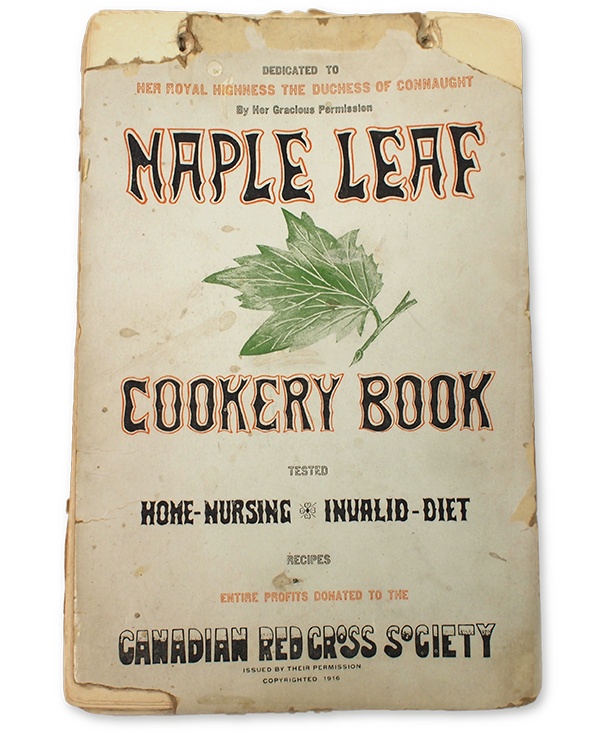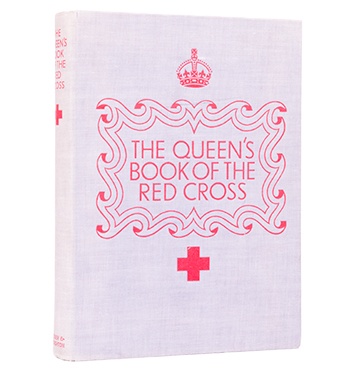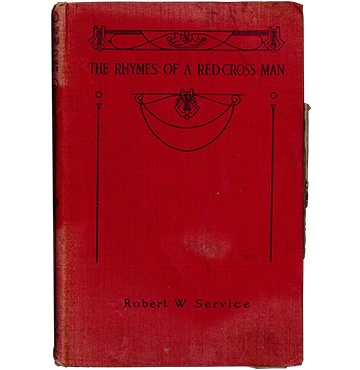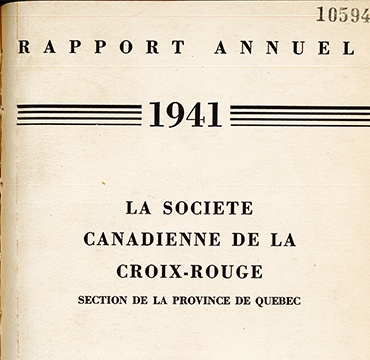Maple Leaf Cookery Book
This charity cookbook from 1916 exemplifies the creativity with which Canadians have raised money to support the Canadian Red Cross for over a century, as well as the diversity of such efforts during the First World War (1914-18) specifically. Dedicated to the society’s wartime President, the Duchess of Connaught, it was sold at the cost of $0.75 each, with all profits going to the Red Cross.
Canadians, like other combatants in the First World War, expected the war to be over by Christmas of 1914. They also expected a mobile war of gallant cavalry charges and daring captures of enemy strongholds. Instead, they got four long years of devastatingly destructive trench warfare on the Western Front, and truly horrifying types and numbers of casualties.
The scale, scope, intensity, and duration of the war meant a vast and unending need for money to pay for the supplementary medical supplies, comforts, hospitals, Prisoner of War parcels, and other services provided by the Red Cross. Canadians responded with ingenuity and determination: this cookbook, for instance, was compiled and published “by a gentleman who desired to make this contribution to the Society,” and sold in local communities across Canada.
Tag days, teas, raffles, auctions, door-to-door and workplace collections, concerts and plays, strawberry socials, dogs with collection boxes strapped to their backs, bake sales, craft sales, penny drives, gifts-in-kind, rallies, and parades were among the more common ways Canadians raised money during the First World War in particular, and much of the 20th century more broadly. But methods of raising money were limited only by volunteers’ imaginations. When Canadians saw some version of the words “in aid of the Red Cross” they knew they were helping the vulnerable, no matter how large or small their donation and regardless of how they were asked to give.
The Maple Leaf Cookery Book brought together recipes contributed by members and friends of the Red Cross, its cover advertising the fact that it included recipes considered good for the sick. This is a reminder that early 20th century Canadians were more often nursed at home by the women in their families, or perhaps by a paid private duty nurse, than in a hospital. Recipes for “invalid foods” were therefore a valuable resource.
This charity cookbook from 1916 exemplifies the creativity with which Canadians have raised money to support the Canadian Red Cross for over a century, as well as the diversity of such efforts during the First World War (1914-18) specifically. Dedicated to the society’s wartime President, the Duchess of Connaught, it was sold at the cost of $0.75 each, with all profits going to the Red Cross.
Canadians, like other combatants in the First World War, expected the war to be over by Christmas of 1914. They also expected a mobile war of gallant cavalry charges and daring captures of enemy strongholds. Instead, they got four long years of devastatingly destructive trench warfare on the Western Front, and truly horrifying types and numbers of casualties.
The scale, scope, intensity, and duration of the war meant a vast and unending need for money to pay for the supplementary medical supplies, comforts, hospitals, Prisoner of War parcels, and other services provided by the Red Cross. Canadians responded with ingenuity and determination: this cookbook, for instance, was compiled and published “by a gentleman who desired to make this contribution to the Society,” and sold in local communities across Canada.
Tag days, teas, raffles, auctions, door-to-door and workplace collections, concerts and plays, strawberry socials, dogs with collection boxes strapped to their backs, bake sales, craft sales, penny drives, gifts-in-kind, rallies, and parades were among the more common ways Canadians raised money during the First World War in particular, and much of the 20th century more broadly. But methods of raising money were limited only by volunteers’ imaginations. When Canadians saw some version of the words “in aid of the Red Cross” they knew they were helping the vulnerable, no matter how large or small their donation and regardless of how they were asked to give.
The Maple Leaf Cookery Book brought together recipes contributed by members and friends of the Red Cross, its cover advertising the fact that it included recipes considered good for the sick. This is a reminder that early 20th century Canadians were more often nursed at home by the women in their families, or perhaps by a paid private duty nurse, than in a hospital. Recipes for “invalid foods” were therefore a valuable resource.




